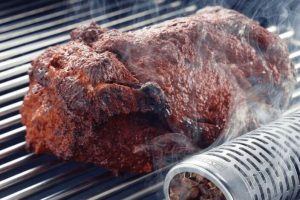Seasoning Cast Iron Skillet With Olive Oil
Seasoning a cast iron skillet with olive oil is a common and effective method to maintain and enhance its cooking properties. Many people wonder if it’s okay to use olive oil for this purpose, and the answer is yes. Olive oil, including extra virgin olive oil, can be used to season a cast iron skillet. It forms a protective layer that helps prevent rust and promotes non-stick properties.
Also, cleaning a cast iron skillet with olive oil is also a viable option. The oil acts as a natural cleaner and can help remove food residue without damaging the skillet’s seasoning.
So, if you’re wondering whether you can season or clean a cast iron skillet with olive oil, rest assured that it is a suitable and effective choice.
What Is Cast Iron Skillet And Its Advantages
A cast iron skillet is a versatile and durable cooking tool that has been used for centuries. It is made from cast iron, which is known for its excellent heat retention and even heat distribution properties. Cast iron skillets have a flat bottom and high, sloping sides, making them ideal for a wide range of cooking tasks.
One of the key advantages of a cast iron skillet is its ability to retain heat. Once heated, it stays hot for a long time, allowing for even cooking and excellent searing of meats. This makes it perfect for dishes like steaks, frittatas, and stir-fries.
The heat retention of a cast iron skillet makes it ideal for dishes that require transferring from stovetop to oven, such as casseroles and baked goods.
When properly seasoned, the skillet develops a layer of polymerized oil that creates a smooth and non-stick cooking surface. This means you can cook with less oil or fat, making it a healthier option. The non-stick surface also makes cleanup easier as food is less likely to stick to the skillet.
How To Season A Cast Iron Skillet With Olive Oil?
Step 1: Preparing the Cast Iron Skillet
Before seasoning your cast iron skillet with olive oil, ensure it is clean and free of any rust or food residue. Scrub the skillet using hot water and a stiff brush or sponge. Avoid using soap or harsh detergents, as they can strip away the seasoning. Rinse the skillet thoroughly and dry it completely.
Step 2: Applying Olive Oil
Once the skillet is dry, pour a small amount of olive oil onto a paper towel or cloth. Use the towel to spread a thin, even layer of oil on the entire cooking surface of the skillet. Ensure that the oil is evenly distributed and covers all the nooks and crannies of the skillet.
Step 3: Removing Excess Oil
After applying the olive oil, use a clean paper towel to remove any excess oil from the skillet. The layer of oil should be thin and almost invisible. Removing excess oil prevents it from becoming sticky or pooling in the skillet during the seasoning process.
Step 4: Heating the Skillet
Next, place the skillet upside down in an oven preheated to a high temperature, typically around 450°F (230°C). Placing it upside down allows any excess oil to drip off. Heating the skillet helps to bond the oil to the metal, promoting the formation of a durable seasoning layer.
Step 5: Allowing the Skillet to Bake
Let the skillet bake in the oven for approximately one hour. This process allows the oil to polymerize and create a protective coating on the skillet’s surface. Polymerization occurs when the oil bonds with the iron, forming a smooth and non-stick layer.
Step 6: Cooling and Repeating
Once the hour is up, turn off the oven and allow the skillet to cool completely inside. Repeat the seasoning process a few more times to build up a strong seasoning layer. Multiple seasoning cycles enhance the skillet’s non-stick properties and improve its performance over time.
Step 7: Regular Maintenance
After seasoning, it’s important to maintain the skillet’s seasoning. Avoid using harsh detergents or scrubbing vigorously when cleaning. Instead, use hot water and a soft brush or sponge to gently clean the skillet. Always dry it thoroughly to prevent rust formation.
Caring For Your Seasoned Cast Iron Skillet
Proper care is essential to maintain the seasoning and prolong the lifespan of your cast iron skillet. After each use, it’s important to clean the skillet promptly.
Avoid using soap or harsh detergents as they can strip away the seasoning. Instead, use hot water and a stiff brush or sponge to remove any food residue.
Once clean, thoroughly dry the skillet to prevent rust formation. It’s crucial to avoid leaving the skillet wet or letting it air dry as this can lead to rust.
To ensure thorough drying, you can place the skillet on a stovetop burner over low heat for a few minutes.
To maintain the seasoning, periodically reapply a thin layer of oil to the skillet. This can be done by applying a small amount of oil (such as olive oil) to a paper towel and rubbing it onto the cooking surface.
Then, place the skillet upside down in an oven preheated to a low temperature (around 300°F or 150°C) for about an hour. This process helps to polymerize the oil and maintain the non-stick properties.
Lastly, proper storage is important to prevent any damage to your cast iron skillet. Store it in a dry place, preferably with a paper towel or cloth placed inside to absorb any moisture and prevent rust.
Cooking With A Seasoned Cast Iron Skillet
Cooking with a seasoned cast iron skillet offers numerous benefits. The even heat distribution ensures that your food cooks evenly, eliminating any hot spots. This is particularly useful for dishes that require precise temperature control, such as searing steaks or baking cornbread.
The naturally non-stick surface of a seasoned cast iron skillet allows you to cook with minimal oil or fat. This not only reduces the amount of added calories but also promotes healthier cooking. You can achieve a beautiful sear on meats without worrying about them sticking to the skillet.
Furthermore, a seasoned cast iron skillet is highly versatile. It can be used on various heat sources, including stovetops, ovens, and even campfires. This makes it a perfect companion for indoor and outdoor cooking adventures.
The seasoning on a cast iron skillet improves over time with regular use. The more you cook with it, the better the non-stick surface becomes. This creates a patina that adds depth of flavor to your dishes, making them more delicious.
Conclusion
As you can see, seasoning a cast iron skillet with olive oil is a quick and easy process that will keep your cherished kitchen tool in tip-top shape for years to come. Not only does this help protect your skillet from rust and wear, but it also enhances the flavor of your food.
Properly seasoned cast iron is virtually non-stick, making it a versatile tool for cooking everything from eggs to steak. Remember to always use a high smoke point oil like olive oil and to apply the oil in a thin layer.
After seasoning, make sure to store your skillet in a cool, dry place to prevent moisture buildup. With these tips in mind, you’ll be well on your way to becoming a cast iron pro in the kitchen. Happy cooking!





